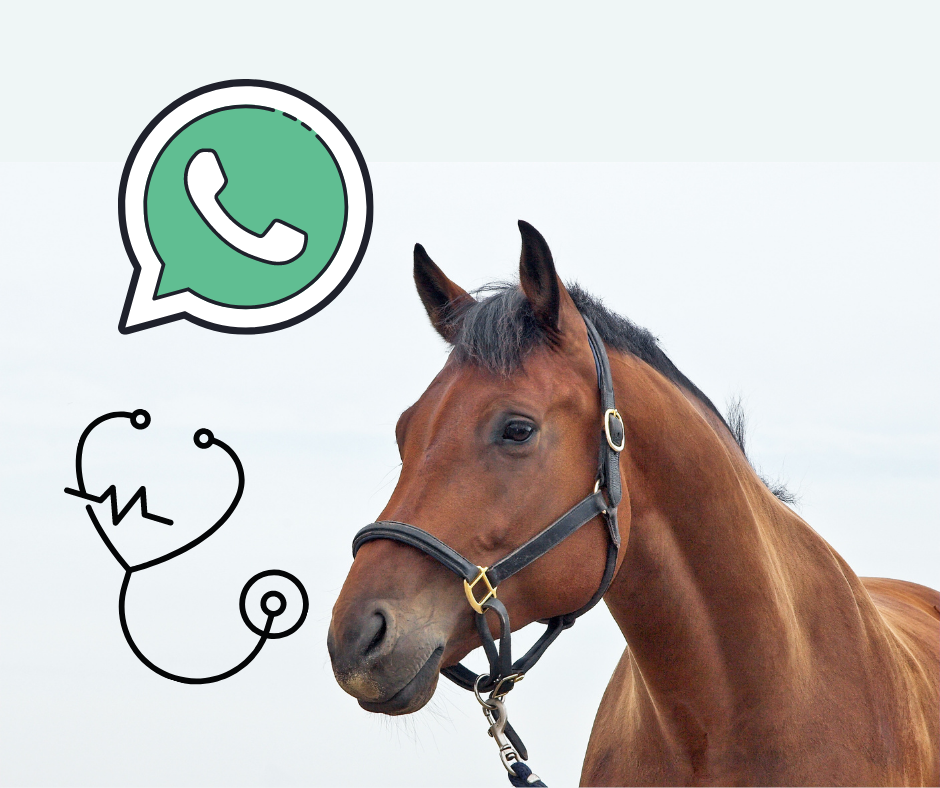Role of Telemedicine in the ‘New Normal’ for Equine Veterinary Care

Equine Guelph has been getting questions on access to their equine veterinarian. The new COVID-19: A Guide to Reopening Veterinary Medicine in Ontario, Stage 3 , prepared by Dr. Scott Weese, DVM, DVSc, DACVIM University of Guelph and the Ontario Veterinary Medical Association was released August 24, 2020. It is meant to be a useful guide and the following recommendations were made regarding the topics of telemedicine and reducing client contact:
Telemedicine
Having an animal visit the clinic or a veterinarian visit the farm or household will be necessary in many situations. However, telemedicine should be approached as the default method to deal with a patient or farm question. A triage approach should be used, whereby telemedicine options are considered first, and in-person visits are used when telemedicine is not appropriate. Veterinarians should remain apprised of College of Veterinarians of Ontario (CVO) guidance on telemedicine.
As an alternative to allowing clients in the building, practices may offer clients the ability to view and participate in the patient visit while they wait in their car via Facetime, Skype or a dedicated telemedicine application.
Hybrid Appointments
There are many situations where telemedicine cannot be used as the sole approach but could still be an effective means of limiting client contact during an appointment. For example, a new puppy appointment could be first conducted via telemedicine, to obtain the history and discuss various issues. This could be followed by a shorter clinic visit for physical examination and vaccination. Since the discussion was already had, the animal’s visit could effectively be performed without the owner present in the clinic.
Here is what a handful of veterinarians have to say about telemedicine:
“I think large animal vets are already accustomed to fielding phone calls and reviewing client videos to determine if a visit to the farm is in order,” says Dr. Laura Frost – Halton Equine Services. “Telemedicine is a really good tool if a client is in a remote location.”
Halton Equine has used telemedicine a handful of times since the beginning of the Covid-19 pandemic. In cases where a visit to the farm was deemed necessary, Frost says their practice has waived the initial telemedicine fee and applied it to the cost of the visit.
Rivendell Equine Veterinary Services operates with the same kind of arrangement for their telemedicine service. “If we end up attending the farm or they ship in, the fee is deducted from the clinical exam,” says Dr. Bri Henderson. “We also have a ‘suitability for sport’ consult fee that is used when I review videos and xrays for potential pre-purchase candidates.”
“Telemedicine allows us to discuss cases and potentially guide our clients on how to manage a situation that doesn’t really require a visit, “ says Henderson. “We can monitor cases from a distance and then if parameters change, make arrangements for the horse to be seen.”
Rivendell has been using telemedicine for a while. There was a slight increase during the initial shut down due to the Covid-19 pandemic. “It is a fairly regular part of our practice,” says Henderson. “I want clients to know they can always reach out with questions and that we won’t needlessly spend their money. It helps with the client-vet trust. In circumstances where more expensive diagnostics or treatment are advised, they know I’m doing it for the good of their horse.”
From our interviews it would appear large animal vets are already aware of the benefits of using telemedicine and have embraced the concept as common practice. The ‘new normal’ of integrating telemedicine may be on the rise more in small animal clinics since the Covid-19 pandemic began.
If you have not done so, contact your equine vet clinic to learn more about their practice guidelines for telemedicine so that you are aware of the process should you need a veterinarian.

